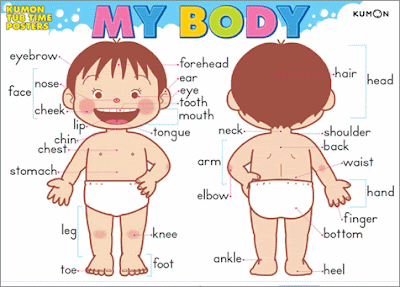SIMPLE PAST TENSE
FORM
[VERB+ed] or irregular verbs
Examples:
(+) You called Mita.
(-) Did you call Mita ?
(-) You did not call Mita.
(+) I waited.
(?) Did I wait?
(-) I did not wait.
USE 1 Completed Action in the Past
Use the Simple Past to express the idea that an action started and finished at a specific time in the past. Sometimes, the speaker may not actually mention the specific time, but they do have one specific time in mind.
Examples:
- I saw a movie yesterday.
- I didn't see a play yesterday.
- Last year, I traveled to Japan.
- Last year, I didn't travel to Korea.
- Did you have dinner last night?
- She washed her car.
- He didn't wash his car.
USE 2 A Series of Completed Actions
We use the Simple Past to list a series of completed actions in the past. These actions happen 1st, 2nd, 3rd, 4th, and so on.
Examples:
- I finished work, walked to the beach, and found a nice place to swim.
- He arrived from the airport at 8:00, checked into the hotel at 9:00, and met the others at 10:00.
- Did you add flour, pour in the milk, and then add the eggs?
USE 3 Duration in Past
The Simple Past can be used with a duration which starts and stops in the past. A duration is a longer action often indicated by expressions such as: for two years, for five minutes, all day, all year, etc.
Examples:
- I lived in Paris for two years.
- Finna studied Korea for five years.
- They sat at the beach all day.
- They did not stay at the party the entire time.
- We talked on the phone for thirty minutes.
- Sinta : How long did you wait for them?
Santi : We waited for one hour.
USE 4 Habits in the Past
The Simple Past can also be used to describe a habit which stopped in the past. It can have the same meaning as "used to." To make it clear that we are talking about a habit, we often add expressions such as: always, often, usually, never, when I was a child, when I was younger, etc.
Examples:
- I studied French when I was a child.
- She played the violin.
- He didn't play the piano.
- Did you play a musical instrument when you were a kid?
- She worked at the movie theater after school.
- They never went to school, they always skipped class.
USE 5 Past Facts or Generalizations
The Simple Past can also be used to describe past facts or generalizations which are no longer true. As in USE 4 above, this use of the Simple Past is quite similar to the expression "used to."
Examples:
- Tuti was shy as a child, but now she is very outgoing.
- He didn't like tomatoes before.
- Did you live in Texas when you were a kid?
- People paid much more to make cell phone calls in the past.
IMPORTANT When-Clauses Happen First
Clauses are groups of words which have meaning but are often not complete sentences. Some clauses begin with the word "when" such as "when I dropped my pen..." or "when class began..." These clauses are called when-clauses, and they are very important. The examples below contain when-clauses.
Examples:
- When I paid her one dollar, she answered my question.
- She answered my question when I paid her one dollar.
When-clauses are important because they always happen first when both clauses are in the Simple Past. Both of the examples above mean the same thing: first, I paid her one dollar, and then, she answered my question. It is not important whether "when I paid her one dollar" is at the beginning of the sentence or at the end of the sentence. However, the example below has a different meaning. First, she answered my question, and then, I paid her one dollar.
Examples:
- I paid her one dollar when she answered my question.
ADVERB PLACEMENT
The examples below show the placement for grammar adverbs such as: always, only, never, ever, still, just, etc.
Examples:
- You just called Dito.
- Did you just call Dito?
ACTIVE / PASSIVE
Examples:
- Tom repaired the car. Active
- The car was repaired by Tom. Passive
PAST CONTINUOUS TENSE
FORM
[was/were + present participle]
Examples:
(+)You were studying when she called.
(?) Were you studying when she called?
(-) You were not studying when she called.
(+) I was singing.
(?) Was I singing?
(-) I was not singing.
USE 1 Interrupted Action in the Past
Use the Past Continuous to indicate that a longer action in the past was interrupted. The interruption is usually a shorter action in the Simple Past. Remember this can be a real interruption or just an interruption in time.
Examples:
- I was watching TV when she called.
- When the phone rang, she was writing a letter.
- While we were having the picnic, it started to rain.
- What were you doing when the earthquake started?
- I was listening to my iPod, so I didn't hear the fire alarm.
- You were not listening to me when I told you to turn the oven off.
- While John was sleeping last night, someone stole his car.
- Sammy was waiting for us when we got off the plane.
- While I was writing the email, the computer suddenly went off.
- Sammy : What were you doing when you broke your leg?
Sinta : I was snowboarding.
USE 2 Specific Time as an Interruption
In USE 1, described above, the Past Continuous is interrupted by a shorter action in the Simple Past. However, you can also use a specific time as an interruption.
Examples:
- Last night at 6 PM, I was eating dinner.
- At midnight, we were still driving through the desert.
- Yesterday at this time, I was sitting at my desk at work.
IMPORTANT
In the Simple Past, a specific time is used to show when an action began or finished. In the Past Continuous, a specific time only interrupts the action.
Examples:
- Last night at 6 PM, I ate dinner.
- I started eating at 6 PM.
- Last night at 6 PM, I was eating dinner.
- I started earlier; and at 6 PM, I was in the process of eating dinner.
USE 3 Parallel Actions
When you use the Past Continuous with two actions in the same sentence, it expresses the idea that both actions were happening at the same time. The actions are parallel.
Examples:
- I was studying while he was making dinner.
- While Ellen was reading, Tim was watching television.
- Were you listening while he was talking?
- I wasn't paying attention while I was writing the letter, so I made several mistakes.
- What were you doing while you were waiting?
- Thomas wasn't working, and I wasn't working either.
- They were eating dinner, discussing their plans, and having a good time.
USE 4 Atmosphere
In English, we often use a series of parallel actions to describe the atmosphere at a particular time in the past.
Example:
When I walked into the office, several people were busily typing, some were talking on the phones, the boss was yelling directions, and customers were waiting to be helped. One customer was yelling at a secretary and waving his hands. Others were complaining to each other about the bad service.
USE 5 Repetition and Irritation with "Always"
The Past Continuous with words such as "always" or "constantly" expresses the idea that something irritating or shocking often happened in the past. The concept is very similar to the expression "used to" but with negative emotion. Remember to put the words "always" or "constantly" between "be" and "verb+ing."
Examples:
- She was always coming to class late.
- He was constantly talking. He annoyed everyone.
- I didn't like them because they were always complaining.
While vs. When
Clauses are groups of words which have meaning, but are often not complete sentences. Some clauses begin with the word "when" such as "when she called" or "when it bit me." Other clauses begin with "while" such as "while she was sleeping" and "while he was surfing." When you talk about things in the past, "when" is most often followed by the verb tense Simple Past, whereas "while" is usually followed by Past Continuous. "While" expresses the idea of "during that time." Study the examples below. They have similar meanings, but they emphasize different parts of the sentence.
Examples:
- I was studying when she called.
- While I was studying, she called.
REMEMBER Non-Continuous Verbs / Mixed Verbs
It is important to remember that Non-Continuous Verbs cannot be used in any continuous tenses. Also, certain non-continuous meanings for Mixed Verbs cannot be used in continuous tenses. Instead of using Past Continuous with these verbs, you must use Simple Past.
Examples:
- Jane was being at my house when you arrived. Not Correct
- Jane was at my house when you arrived. Correct
ADVERB PLACEMENT
The examples below show the placement for grammar adverbs such as: always, only, never, ever, still, just, etc.
Examples:
- You were just studying when she called.
- Were you just studying when she called?
ACTIVE / PASSIVE
Examples:
- The salesman was helping the customer when the thief came into the store. Active
- The customer was being helped by the salesman when the thief came into the store. Passive

































